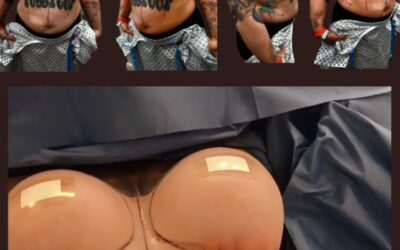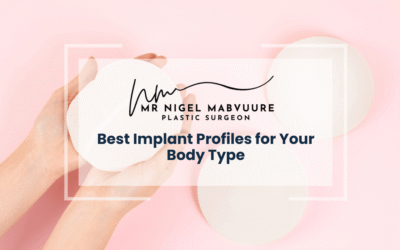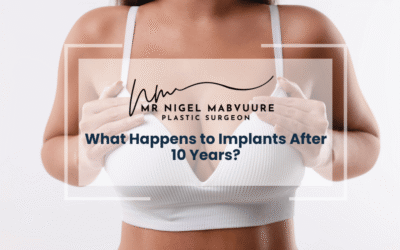Breast Implant Placement Options
- Placement Matters: The choice between over and under the muscle significantly impacts aesthetic results, recovery, and long-term breast augmentation outcomes.
- Under the Muscle Benefits: Provides more natural-looking results, better implant coverage, and potentially lower capsular contracture risks, especially for patients with minimal breast tissue.
- Over the Muscle Advantages: Offers shorter recovery, less surgical trauma, and is ideal for patients with adequate breast tissue or active lifestyles.
- Individual Considerations: Body type, lifestyle, aesthetic goals, and professional surgical assessment are crucial in determining the optimal implant placement.
- Long-term Perspective: Both placement options require ongoing monitoring and have unique maintenance considerations that impact future breast appearance and health.
Ultimately, there’s no universal “best” placement option. The ideal choice depends on individual patient characteristics, desired outcomes, and professional medical guidance.
Table of Contents
- Understanding Breast Implant Placement Options: Over vs Under the Muscle
- What Makes Under the Muscle Placement Popular?
- Over the Muscle Benefits: When Subglandular Works Best
- Comparing Recovery and Results Between Placement Options
- How to Choose Between Over and Under the Muscle
- Long-term Outcomes and Maintenance Differences
Understanding Breast Implant Placement Options: Over vs Under the Muscle
When considering breast augmentation, one of the most crucial decisions is the placement of implants relative to the pectoral muscle. In submuscular (under the muscle) placement, the implant sits beneath both the breast tissue and the pectoral muscle. Conversely, subglandular (over the muscle) placement positions the implant directly behind the breast tissue but in front of the muscle.
The anatomical positioning significantly influences both aesthetic outcomes and recovery experience. Under the muscle placement provides additional tissue coverage, particularly beneficial for women with minimal natural breast tissue. Over the muscle placement, while offering its own advantages, typically results in a more pronounced upper pole fullness and may be more suitable for those with adequate natural breast tissue coverage.
Contact
What Makes Under the Muscle Placement Popular?
Submuscular placement has become increasingly favoured for its natural-looking results and additional tissue coverage. The pectoral muscle provides an extra layer of coverage, which helps disguise the implant’s upper edge and creates a more gradual slope in the upper breast. This placement is particularly beneficial for slender patients or those with minimal breast tissue.
The muscle coverage also reduces the risk of visible rippling and provides better support for the implant over time. Studies have shown that under the muscle placement may offer better long-term stability and potentially lower rates of capsular contracture. Additionally, this placement typically interferes less with mammogram accuracy, making breast cancer screening more straightforward.
Over the Muscle Benefits: When Subglandular Works Best
Subglandular placement offers distinct advantages for specific patient profiles. This technique is particularly suitable for women with adequate natural breast tissue and those leading active lifestyles. Breast enhancement procedures using over the muscle placement typically result in a shorter recovery period and less post-operative discomfort.
Athletes and bodybuilders often prefer this placement as it prevents implant displacement during chest muscle contraction. The procedure also tends to be less invasive, resulting in reduced surgical trauma and potentially quicker return to normal activities. For patients with mild breast ptosis, over the muscle placement can provide better projection and lift without necessitating additional procedures.
Comparing Recovery and Results Between Placement Options
Recovery experiences differ significantly between the two placement options. Under the muscle placement typically involves more initial discomfort and a longer recovery period, usually requiring 1-2 weeks before returning to normal activities. Patients may experience more pronounced muscle soreness and restricted upper body movement initially.
Over the muscle placement generally offers a quicker recovery, with many patients returning to normal activities within 5-7 days. However, the final aesthetic results may take several weeks to develop as swelling subsides. Both techniques require careful adherence to post-operative instructions, including wearing supportive garments and avoiding strenuous activities during the initial healing phase.
How to Choose Between Over and Under the Muscle
The decision between placement options should be based on several personal factors. Body type plays a crucial role – women with minimal breast tissue often achieve better results with under the muscle placement, while those with more natural tissue may benefit from over the muscle positioning. Lifestyle considerations, particularly regarding athletic activities, should influence the choice.
Professional guidance from an experienced surgeon is essential in making this decision. They will assess factors such as chest wall anatomy, tissue characteristics, desired outcome, and implant type to recommend the most suitable placement option. The surgeon will also consider long-term maintenance and potential future procedures in their recommendation.
Long-term Outcomes and Maintenance Differences
Long-term considerations vary between placement options. Under the muscle implants typically maintain their position better over time and may have a lower risk of visible aging changes. However, they may require more extensive surgery if replacement becomes necessary. Regular monitoring through appropriate imaging techniques remains crucial for both placement options.
Over the muscle implants might show more noticeable changes with aging and gravity but often allow for simpler revision procedures if needed. Both placement options require periodic evaluation to monitor implant integrity and position. Understanding these long-term aspects helps patients make informed decisions aligned with their aesthetic goals and lifestyle requirements.
Frequently Asked Questions
What is the main difference between over and under the muscle implant placement?
The primary difference is location: under the muscle placement positions the implant beneath the pectoral muscle, while over the muscle places the implant directly behind breast tissue but in front of the muscle. Under the muscle placement typically provides more natural-looking results and better tissue coverage, especially for women with minimal breast tissue.
Which implant placement is less painful during recovery?
Over the muscle placement generally involves less post-operative pain and a shorter recovery period. Patients typically return to normal activities within 5-7 days, compared to 1-2 weeks for under the muscle placement. Under the muscle placement causes more muscle soreness and restricted upper body movement initially.
Are there specific body types better suited for each implant placement?
Women with minimal breast tissue often achieve better results with under the muscle placement, as it provides additional coverage and a more natural slope. Those with more natural breast tissue and athletes may prefer over the muscle placement, which prevents implant displacement during muscle contraction and offers quicker recovery.
Does implant placement affect mammogram accuracy?
Under the muscle placement typically interferes less with mammogram accuracy. The muscle coverage allows for clearer imaging, making breast cancer screening more straightforward. However, patients should always inform radiologists about their implants to ensure proper screening techniques.
How long do breast implants last with each placement option?
Both placement options typically require implant replacement every 10-15 years. Under the muscle implants often maintain position better and may have lower risks of visible aging changes. However, individual factors like lifestyle, implant type, and body changes can influence implant longevity.
Can I change my implant placement after the initial surgery?
Yes, implant placement can be changed through revision surgery. However, switching between over and under the muscle placement is a complex procedure that requires careful evaluation by a board-certified plastic surgeon. The process may involve additional considerations like tissue manipulation and potential need for additional procedures.
What are the risks associated with each placement option?
Under the muscle placement may have lower risks of capsular contracture and visible rippling. Over the muscle placement might show more noticeable changes with aging but allows for simpler revision procedures. Both options carry standard surgical risks like infection, implant rupture, and potential need for future corrective surgeries.




